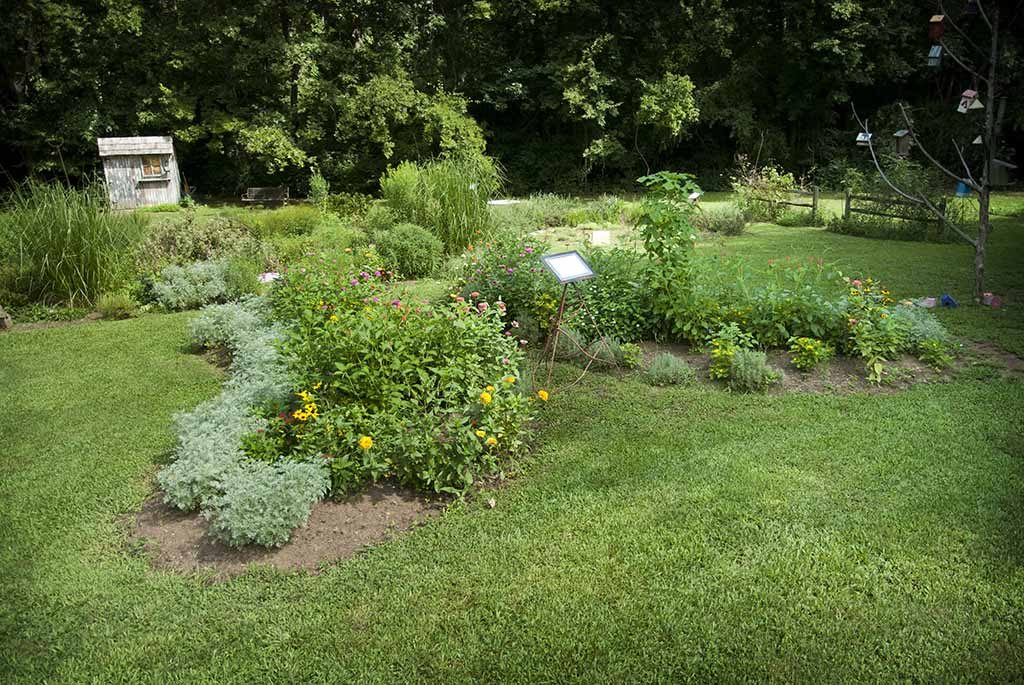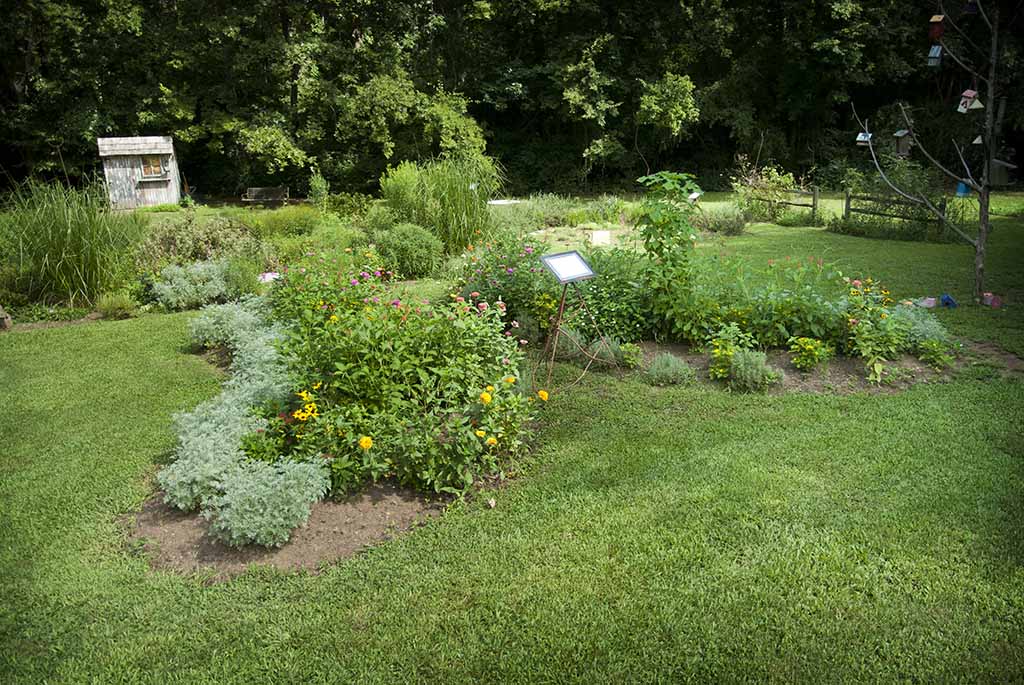You like flowers. Bees and butterflies need flowers. A pollinator garden can make you all happy.
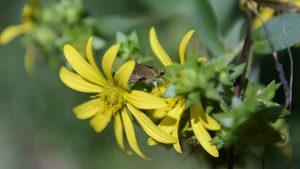
With habitat loss and pesticide use, many types of bees and butterflies are struggling right now. The University has a dedicated habitat to help these important pollinators, and the Bee Club, a UA student organization, is maintaining a pollinator garden at the UA Arboretum and the RISE Center.
Whether you have a large country garden, a suburban lawn or a patio with some flower boxes, you can grow a pollinator garden, too. Bee Club officers Jenna Minser and Harris Bolus offer the following suggestions.
Choose the right flowers.
Think local. Pollinators prefer native plants; for west Alabama, that would include such flowers as milkweed (a butterfly favorite), violets, Alabama azaleas, bee balm and mountain mint. You don’t have to avoid non-native varieties; just make sure you have some local flowers in the mix.
Family first. When choosing plantings, think in terms of plant families rather than individual members of some of these families:
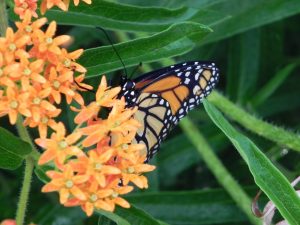
Buttercup: anemone, buttercup, clematis, columbine, larkspur, monkshood
Carrot: angelica, dill, fennel, golden Alexander, Queen Anne’s lace, sanicle, sea holly
Mint: anise hyssop, bee balm, bugleweed, calamint, catnip, giant hyssop, lavender, mountain mint, sage, salvia
Sunflower family: aster, black-eyed Susan, chrysanthemum, coneflower, cosmos, daisy, dahlia, goldenrod, marigold, sunflower, yarrow, zinnia.
Choose varieties instead of one mass planting. Adding variety also helps reduce pests who are drawn to mass plantings of one desirable food source.
But not too much variety. Pests aren’t the only ones who like to feed on one type of plant at a time. When bees go on a foraging trip, they like to collect pollen from one kind of flower rather than several. Planting in groups (perhaps seven or eight plants) can encourage pollinators and be pleasing to the eye at the same time.
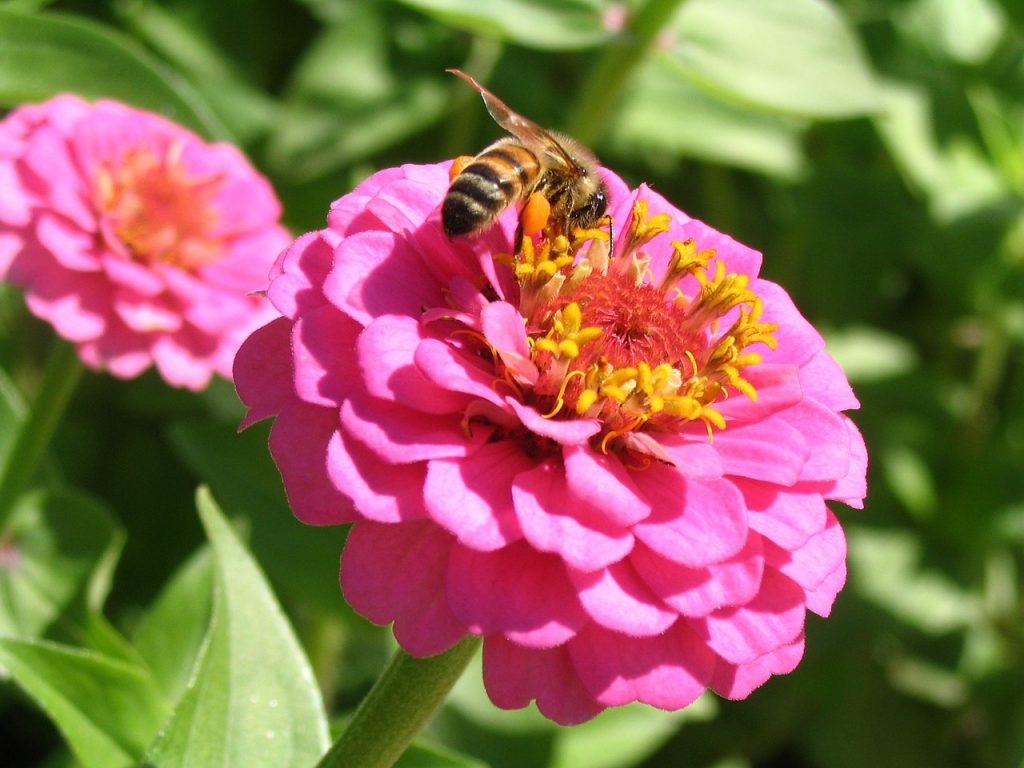
Go old school. Heirloom varieties of flowers have more nectar and pollen than newer varieties. Hybrid or heavy-petaled varieties, while showy, are often lacking in food stuffs for pollinators.
Remember water.
Add a birdbath. Have you ever seen flocks of butterflies around a puddle after a spring rain? Butterflies love puddles or small, shallow pools of water, Bolus said. Bees, birds and other pollinators also need water.
Irrigate carefully. Don’t pour water directly on the leaves of your plants. Keeping leaves wet and allowing mud to splash up from below encourages fungus, and fungicides are hard on insects.
Avoid pesticides.
Don’t overdo it. Overuse of pesticides that kill insects indiscriminately will undo a lot of your work. Non-chemical approaches such as the planting tips given here can discourage pests and reduce the need for pesticides.
Be strategic. When pesticides are required, look for organic types and use as little as needed, applied carefully, rather than laying down a blanket of chemicals.
